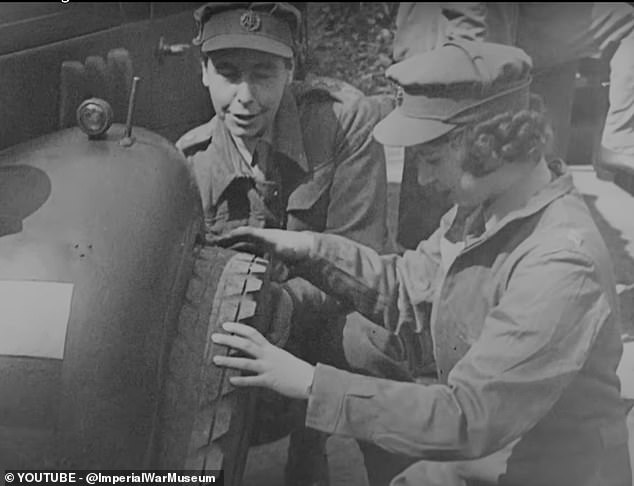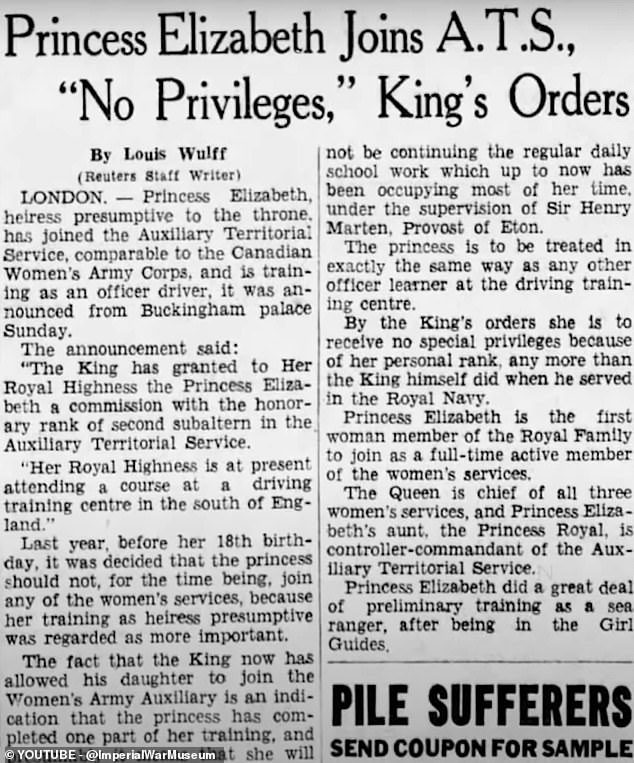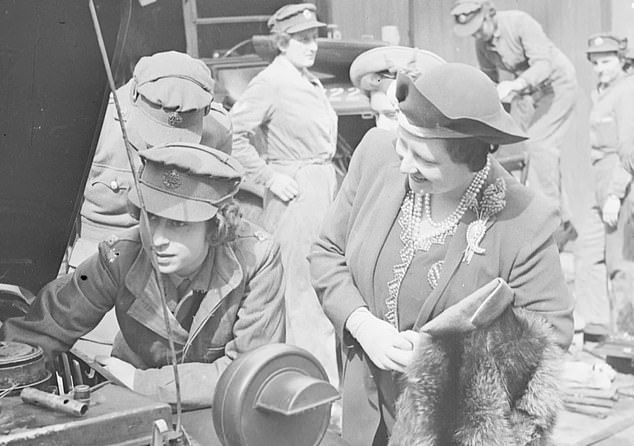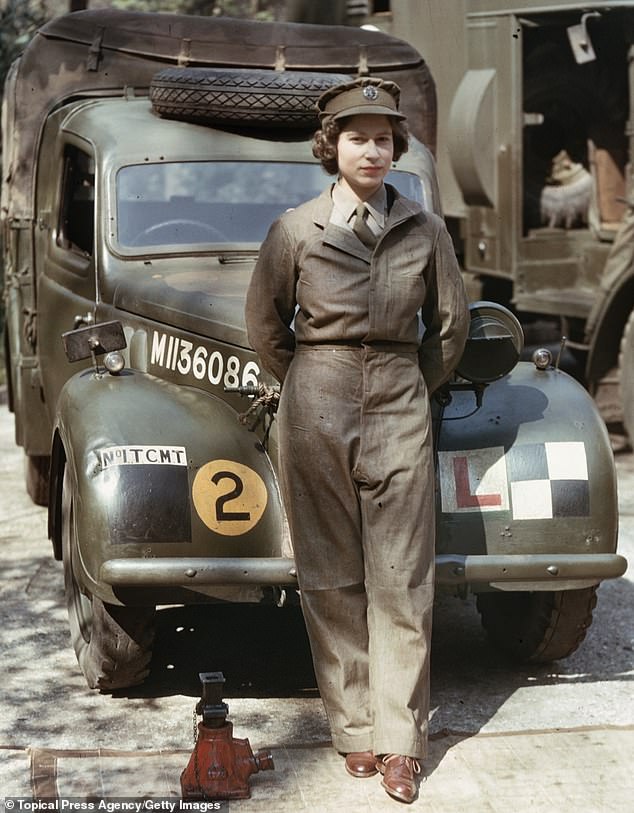Tomorrow (June 6) marks the 80th anniversary of D-Day, the first day of the combined naval, air and ground assault by Allied forces on Nazi-occupied France.
As part of the operation, which would ultimately lead to the defeat of the Nazis, more than 5,000 ships and landing craft were used to land more than 150,000 soldiers on five Normandy beaches.
To commemorate the historic event, veterans and others travel to Normandy to pay their respects to those killed in the conflict, while others share their experiences of the war.
Among those who participated in the Second World War was the late Queen Elizabeth II, who was determined to stand alongside her peers and “do her bit” to the war effort.
A video shared on the Imperial War Museum’s YouTube channel details the then princess’s involvement in the Second World War and how she played her role. The young Elizabeth would make history, as the first royal woman to become a full-time member of the armed forces, after signing up for the Auxiliary Territorial Service a year after her 18th birthday.
Princess Elizabeth is pictured in her Auxiliary Territorial Service uniform, standing in front of an army ambulance.
She signed up despite reports that King George VI had ruled that her training as a princess outweighed the country’s growing workforce problems and that she would not join any of the women’s auxiliaries or work in a factory.
The King and his wife Queen Elizabeth (later known as the Queen Mother) were determined not to be seen as hiding from the war, so they visited areas that had been bombed during the Blitz.
They also visited military personnel, made trips to munitions factories, RAF bases and Royal Navy ships, and met troops training for combat.
However, although the family had wanted to remain together at Buckingham Palace throughout the conflict, at the height of the Blitz in 1940, Princesses Elizabeth and Margaret were evacuated to Windsor Castle.
In September of that year, five high-explosive bombs were dropped on the Palace, but the King and Queen decided to stay there in solidarity with those who lived through the Blitz. Furthermore, the family was subject to the same rationing as everyone else.
Speaking of the bombing, the then Queen Elizabeth was reported to have said: “I’m glad we were bombed.” Now we can look the East End in the eye.
The Palace was bombed nine times during World War II.
Princess Elizabeth had her first royal duty during the conflict. At the age of 14, on October 13, 1940, she made a radio broadcast from Windsor Castle.

The young royal wanted to do her bit to help the war effort, so she joined the Auxiliary Territorial Service, enrolling in a driving and vehicle maintenance course.
Speaking during the BBC’s Children’s Hour programme, the princess urged evacuee children to have courage, despite the difficult circumstances.
She said: ‘Thousands of you in this country have had to leave your homes and be separated from your fathers and mothers.
“My sister Margaret Rose and I feel very sorry for you, as we know from experience what it means to be away from those you love most.”
He continued: ‘We are trying to do everything we can to help our brave sailors, soldiers and airmen, and we are also trying to endure our share of the danger and sadness of war. We all know that everything will work out in the end.’
In 1942, he became colonel of the Grenadier Guards and carried out his first official public engagement on the morning of his 16th birthday, inspecting the guards at Windsor Castle.
Among her other appearances, she was photographed working on the plots of Windsor Castle as part of the ‘Dig for Victory’ campaign.
At age 18, he launched his first ship, HMS Vanguard, in Clydebank, Scotland. That year, as her father was in Italy, she carried out some of her functions as head of state.
However, she wanted to do more to help the war effort, and although King George did not want her to join the Women’s Auxiliary or work in a factory, a year after her 18th birthday, in February 1945, she enlisted in the Territorial Assistant. Service, the female branch of the British Army, known as the ATS.

While undergoing her ATS training, the young royal received no special treatment and mixed with people from different backgrounds.
During this time, women in the ATS carried out a number of jobs that would free up men for front-line service.
Since women were not allowed combat roles, they would serve in other capacities. Among them, they would work as driver employees, postal workers, delivery drivers and ammunition inspectors.
Some ATS members work with anti-aircraft units, tracking enemy aircraft. Women were not allowed to fire weapons, but they could aim anti-aircraft guns for the men to shoot.
Princess Elizabeth enrolled in a vehicle driving and maintenance course, where she learned about mechanics theory, map reading and how to drive and maintain heavy army vehicles.
He did not receive any special treatment during his training and mixed with people of all backgrounds.
After working seven hours a day at the barracks, he returned home to Windsor Castle in the evenings.
The princess completed five months of training as a mechanic and military truck driver, and was promoted to the rank of Honorary Junior Commander.
During her training, there was great public and media interest in her activities, and she was filmed and photographed while learning her trade. During this time, her parents and her sister, Princess Margaret, visited her at the training camp.
Although she graduated as a fully qualified driver (taking a final test which involved her making a solo journey in a heavy vehicle from Surrey to London), the Second World War ended before she could put her new skills to use.
To celebrate V Day on May 8, 1945 (which marked victory in Europe, although the war would not end until September of that year), the Kings were accompanied by their daughters and Prime Minister Winston Churchill on the balcony of the Palace of Buckingham. .
There they greeted the large crowds who had gathered to celebrate the end of the conflict in Europe.

A young Princess Elizabeth (pictured, left) is visited by her mother, Queen Elizabeth, during her ATS training.
After appearing on the balcony, Elizabeth was allowed to join the crowd outside the palace, mingling anonymously with the public.
Speaking of this experience years later, when she was Queen, she described the night as one of the most memorable of her life.
She said: ‘We asked my parents if we could go out and see for ourselves.
‘I remember we were terrified of being recognised, so I pulled my uniform cap down over my eyes… I remember lines of strangers arm in arm and walking down Whitehall, all of us just swept up in a tide of happiness and relief. ‘
Seven years after World War II ended, Elizabeth became queen.

